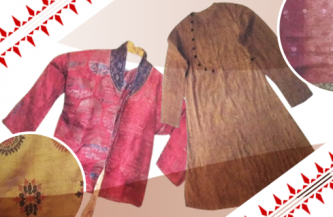Genetic Diversity in Indian Populations

A home to more than one billion people, India is a land of vast human diversity, consisting of more than four and a half thousand anthropologically well-defined populations. Each population differs in terms of language, culture, customs, physical features and genetic architecture, which is determined by DNA— the hereditary material that is passed on from one generation to the next. Thanks to CSIR-Centre for Cellular and Molecular Biology (CCMB) scientists, who in collaboration with scientists from Harvard Medical School, USA have provided us the genetic evidence for the origin and affinities of Indian populations.
Interestingly, DNA molecule of any two unrelated individuals differ just by 0.1%, as the remaining 99.9% of DNA is identical. What an irony then that all the amazing human diversity is housed only in this 0.1%, apparently tiny portion of our DNA! It is this region of DNA, comprising some three million base pairs, that is a storehouse of clues to a rich source of information, and has today helped scientists to reconstruct the historical origins of human populations in India. It is also the region of our genetic material, which clearly points to the many genetic variations in human beings that make selected individuals at a higher risk of certain genetic diseases as compared to others. These variations also make some individuals succeptible and the others resistant to infectious diseases, some get theraputic response and some may get adverse effect for the same drug.
For this study on ascertaining genetic variability across various human populations in India, about 5.6 lakh genetic markers across the genomes were analyzed on 132 individuals from 25 diverse groups, representing 13 states comprising all the major language families and social groups (traditionally upper and lower castes, as well as tribal groups). An important revelation of this study published in September 24, 2009 issue of Nature, is that the majority of contemporary Indian populations have diverged from two distinct ancestral populations – (1) the ‘Ancestral North Indians’ (ANI) who are related to western Eurasians, and (2) the ‘Ancestral South Indians’ (ASI) who are not related to any group outside India. Subsequently, these two founding groups (ANI and ASI) have given rise to several populations and have mixed during the last 4,000 – 2,000 year before the present (American Journal of Human Genetics, 2013). However, for the last 2,000 years, every single population followed strict endogamy (within population) marriage practice. As a result, these scientists have predicted that, existence of large number of population-specific diseases in India and genetic variations that cause diseases are India-specific. According to these researchers, the founder effects (origin of population from small number of individuals) are responsible for a higher burden of recessive diseases in India than consanguinity. In fact, another study led by demonstrated that the mutation in MYBPC3, which led to sudden cardiac death is distributed at a frequency of ~ 4% only in Indian subcontinent (Nature Genetics, 2009). Another important finding of the CSIR-CCMB scientists is that for the first time, with the help of genetic tools, they have proved that there was no Aryan invasion in India.
India, the world’s second most populous nation is uniquely distinct for its varied diversity. Be it geographic or climatic diversity, be it the diversity in languages, religions and cultures of its people, or be it the genetic diversity as evident today, after all it is our very diversity that imparts strength to our oneness.
{Feature has been uploaded by CSIR (Unit for Science Dissemination), Ministry of Science & Technology, New Delhi}.





